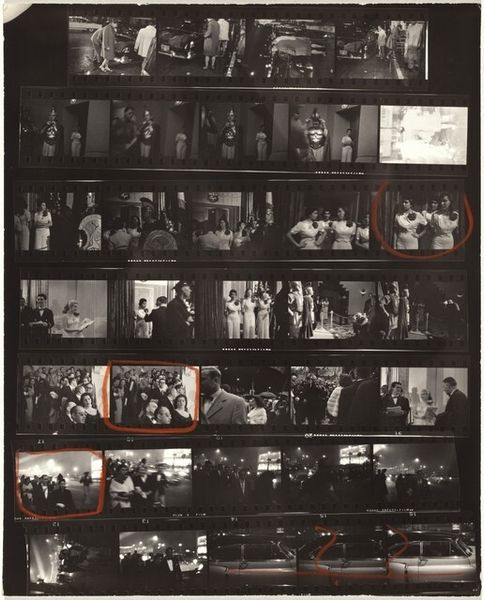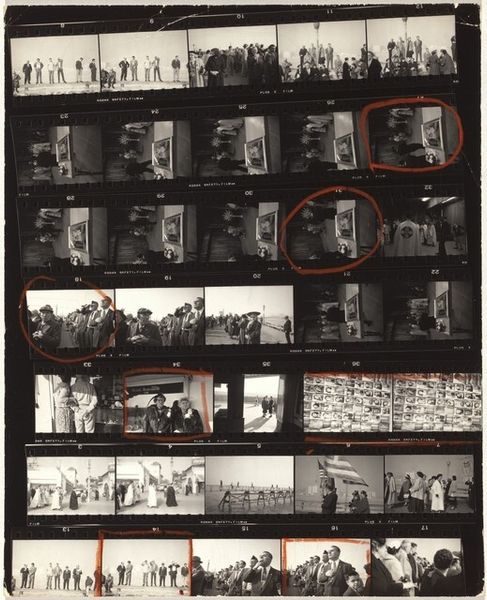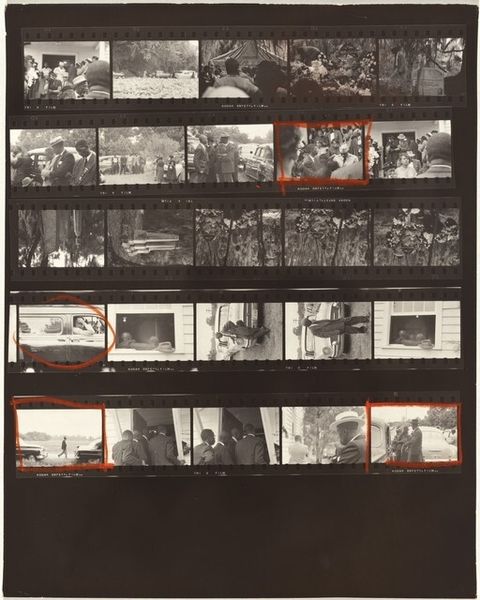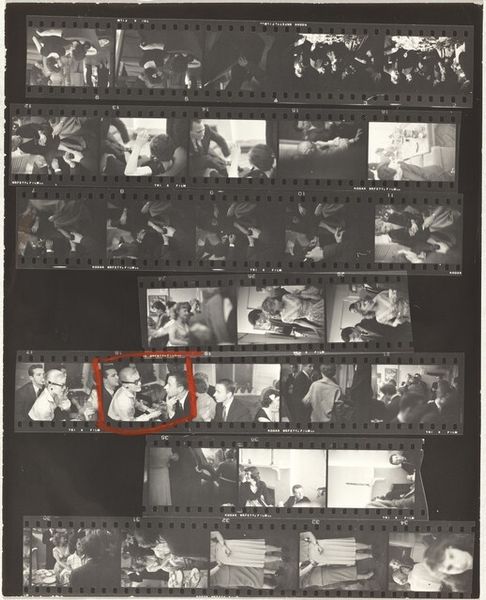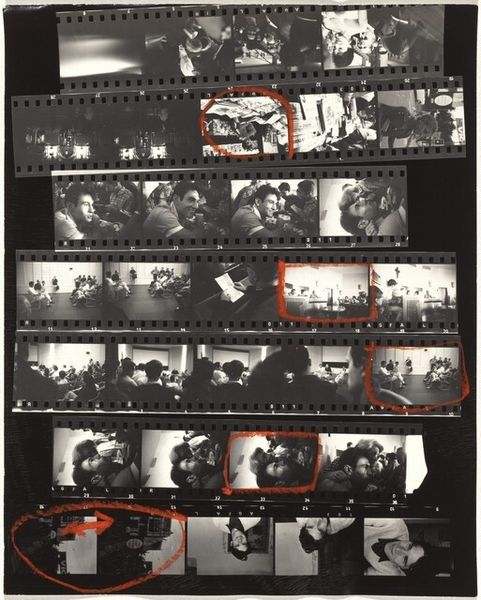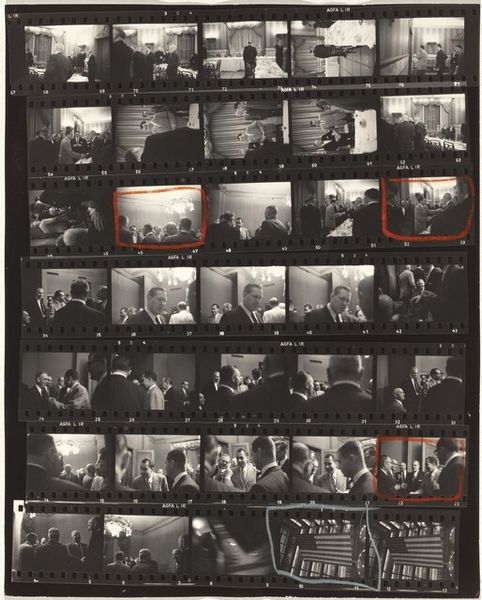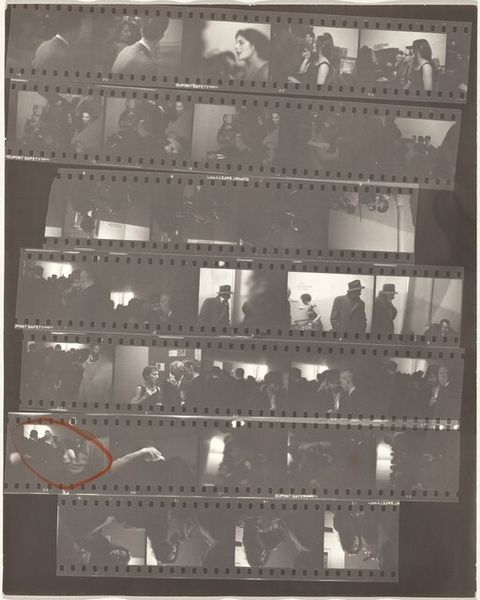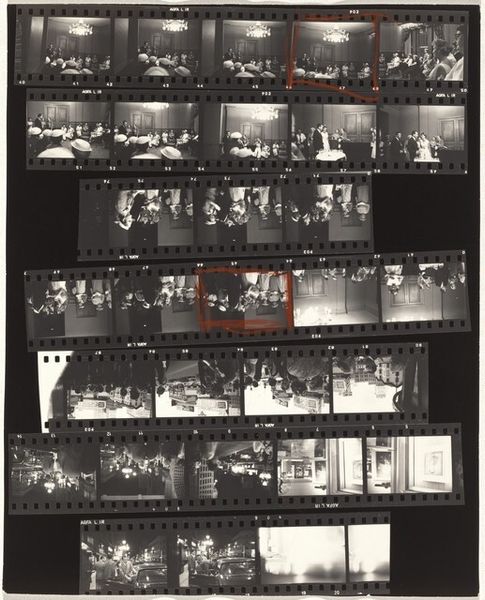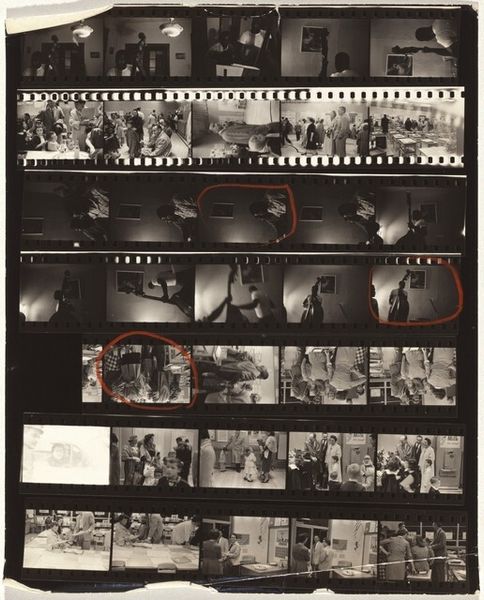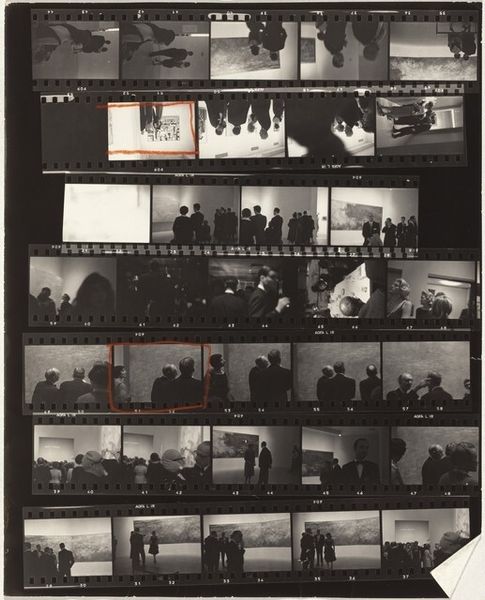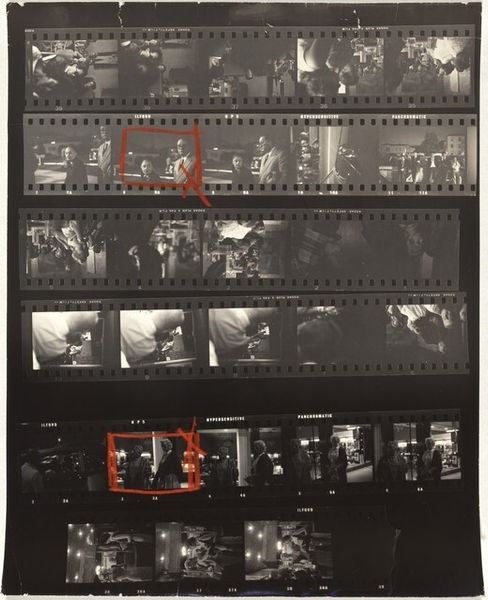
contact-print, photography, gelatin-silver-print
#
portrait
#
abstract-expressionism
#
film photography
#
presentation photography
#
contact-print
#
archive photography
#
photography
#
group-portraits
#
gelatin-silver-print
#
pop-art
#
modernism
Dimensions: overall: 20.2 x 25.2 cm (7 15/16 x 9 15/16 in.)
Copyright: National Gallery of Art: CC0 1.0
Editor: This is Robert Frank's "Venice, Italy 25" from 1964, a gelatin-silver print, actually a contact sheet, offering a peek into Frank's photographic process. I’m struck by its layered effect; like a behind-the-scenes glimpse of how he chose his final images. What historical context might illuminate this work? Curator: Contact sheets are usually working documents, not final presentation pieces. Presenting it as an artwork breaks down the mystique around the 'decisive moment' and draws attention to the photographer's selections, raising questions about intention and authorship. Frank, by showing the entire roll, highlights the unedited reality, inviting viewers to consider the editing process and the socio-cultural implications of each image included or excluded. Think about what stories remain untold through omission. Editor: That makes sense. I hadn’t really considered the implications of showing the entire roll versus selected images. Is there something significant about these images coming from Venice? Curator: Venice, in the popular imagination, is a place of romantic clichés. Frank, often drawn to depicting American alienation, might be contrasting those preconceived notions with his own more immediate and unvarnished observations. The marked images particularly, perhaps hinting at a performance, and the blurred and unclear ones disrupt that easy, picturesque view of the city. Is he searching for truth, or commenting on the performativity of identity in the photographic medium itself? Editor: So it's like he's questioning not only the subject but also his own role in shaping our understanding of it. I'll never look at a contact sheet the same way! Curator: Exactly. By laying bare his process, Frank encourages us to be more critical viewers of all photographs, including how institutions and social forces influence what we see, and more importantly, what we *don’t* see. A vital skill for any artist to be aware of in the creation process.
Comments
No comments
Be the first to comment and join the conversation on the ultimate creative platform.
